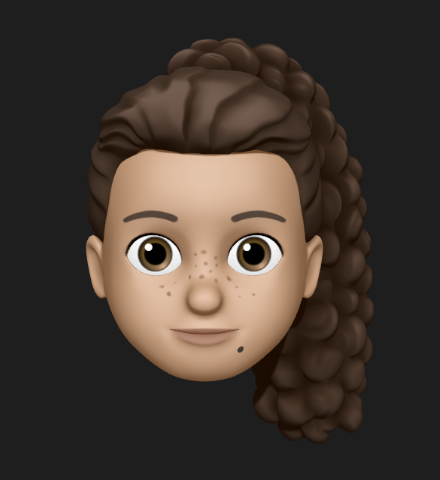 Work and Travel
Work and Travel Countries You Can Travel to with a Mexican Passport
Discover the countries you can visit with a Mexican passport (without a visa). Here is a list of destinations organized by continent.



Managing money during a trip is essential to plan how much you'll spend on food, transportation, activities, or shopping. This is especially true when traveling to a destination with a currency different from the Mexican peso—in this case, the currency of Vietnam.
It’s even more relevant if it’s your first time traveling abroad. In this guide, we explain the most important things you need to know about the Vietnamese dong so you can make smart decisions before you depart.
The Vietnamese dong has been the country’s official currency since 1978. More than just a means of exchange, the dong symbolizes Vietnam’s economic and political evolution over the decades.
Here are some key details:
Its symbol, officially adopted in 1978, is the letter “đ” or sometimes just a lowercase “d.”
It is issued by the State Bank of Vietnam.
During French colonization, the Indochinese piastre was used as the main currency.
In 1945, the first aluminum coins were minted under the Democratic Republic of Vietnam.
In 1947, the first banknotes were introduced under the official name “dong.”
In 1951, the National Bank of Vietnam was founded, and a monetary reform followed: 10 old dongs became equivalent to 1 new dong.
In 1975, following the country’s reunification, a new version of the dong was introduced with an exchange rate of 1 new dong for every 500 old ones, with a value equal to the U.S. dollar at that time.
Each of these transformations not only met economic needs but also reflected pivotal moments in Vietnam’s history. Through its changes and redesigns, the dong has accompanied the nation’s development, adapting to new economic and technological eras.
Vietnam is a very popular destination, receiving thousands of tourists each year. But one of the first surprises for visitors is the large number of zeros on its banknotes.
The dong has multiple denominations that look quite similar at first glance. Distinguishing them can be tricky, especially due to their very similar color tones.
However, the size of the banknotes increases with their denomination, which helps a bit in telling them apart.
Here are the main features of each Vietnamese banknote:
Denomination (VND) | Material | Approximate Color |
1,000 | Cotton paper | Green/Pink |
2,000 | Cotton paper | Pink/Blue/Violet |
5,000 | Cotton paper | Blue |
10,000 | Polymer | Yellow-brown |
20,000 | Polymer | Light blue |
50,000 | Polymer | Pink or plum with purplish brown hues |
100,000 | Polymer | Olive green |
200,000 | Polymer | Reddish orange |
500,000 | Polymer | Dark blue / Cyan |
Note: Lower denominations (1,000, 2,000, and 5,000 VND) also exist in polymer versions, although cotton notes are still in circulation.
Now let’s talk about exchange rates.
If you're a Mexican visiting Vietnam, it’s important to understand how the dong’s exchange rate works against other currencies. At the very least, with the most common ones—the euro and the U.S. dollar—so you have an idea of its value.
The euro (EUR), one of Europe’s main currencies, is commonly used in Vietnam’s major cities and tourist destinations. However, if you bring euros, you’ll need to exchange them upon arrival to get Vietnamese dong.
Current exchange rate from euros to dong: 1 EUR = 30.19 VND
Exchange rate from dong to euros: 1 VND = 0.00 EUR
Although euros may be accepted, it’s not recommended to pay in this currency, as additional charges may apply.
U.S. currency is widely recognized and accepted globally, and Vietnam is no exception. You can use it in several locations throughout the country. However, it’s still advisable to convert it to dong for local payments.
Current exchange rate from dollars to dong: 1 USD = 26.0 VND
Exchange rate from dong to dollars: 1 VND = 0.00 USD
In Vietnam, most transactions are carried out in dong. From restaurants and local markets to hotels, airports, and tourist areas, you’ll need to pay in the local currency.
Vietnam accepts various world currencies for exchange, especially well-known ones such as the euro, U.S. dollar, British pound, and Australian dollar.
The main options are:
These are the safest choice. Just like in Mexico, you’ll find several banks where you can exchange money.
In Vietnam, there are:
State-owned banks like Vietcombank, Agribank, and Vietinbank.
Private banks like Techcombank and MB Bank.
As regulated institutions, they may even provide a receipt with transaction details, similar to references in a bank transfer.
However, the commission can be a major drawback, so it’s best not to exchange a large amount of money at once.
Main airports like Hanoi or Ho Chi Minh City have currency exchange counters available upon arrival.
While convenient, the exchange rate is usually less favorable. Therefore, it’s advisable to only change enough for transportation or immediate expenses.
Some large hotels offer currency exchange services for guests at rates similar to banks. However, smaller hotels may charge a service fee. It’s best to ask beforehand.
Found in major cities and often offer competitive rates. Just make sure to check the offered exchange rate and confirm if any additional fees apply.
ATMs only dispense Vietnamese dong, and the amount is converted based on the exchange rate of the day.
You can use your DolarApp card to withdraw cash at ATMs that accept the Mastercard network.
There’s a 1% commission per withdrawal, and the ATM may also charge a fee depending on the bank.
Alternatively, you can pay directly with digital euros or dollars in places that accept international cards—including malls, hotels, airports, restaurants, or tourist zones.
Additionally, DolarApp offers more benefits to users in Mexico, Argentina, Colombia, and Brazil—such as the ability to receive remittances from the United States.
Exchanging money in Vietnam can be safe if you choose the right place and take basic precautions such as:
Look for banks regulated by the government. There, the process is transparent, and your interests are protected by law.
Don’t exchange at the first place you see. Visit at least two or three locations to compare rates and choose the most reliable and favorable.
Always count the money received and confirm the amount before signing any receipt or walking away.
Use an app or online converter to calculate the exchange rate yourself.
Ask for a mix of denominations to facilitate daily payments and avoid confusion with large amounts.
Avoid torn or damaged bills. Many businesses in Vietnam don’t accept them, so inspect each one before leaving the establishment.
And of course, never exchange money on the street—vendors there often offer counterfeit bills.
Vietnam maintains active commercial and tourism relations with other Asian countries, so it’s common for travelers to arrive with different regional currencies.
Here is the exchange rate for five Asian currencies to the Vietnamese dong:
The yen (¥), Japan’s currency, is one of the most traded in the world. Its absolute value in Vietnam is low, but it’s widely used among Japanese travelers.
1 JPY = 181.3 VND.
Symbolized as ¥ or CN¥, it is the official currency of the People’s Republic of China. Common in commercial and border areas due to strong bilateral economic ties.
1 CNY = 3.63 VND.
The Singaporean dollar, shown as S$, is known for its strength and stability. It can be exchanged without issue in Vietnam thanks to robust trade between the two countries.
1 SGD = 20.3 VND.
HK$, issued by private banks under government regulation, is a constant presence in Vietnamese exchange houses, especially in cities with high international traffic.
1 HKD = 3.31 VND.
The rupee (₹) isn’t as popular as other currencies in Vietnam, but it can be exchanged at major banks or authorized houses in tourist zones.
1 INR = 304.4 VND.
Source: https://www.xe.com / exchange rates as of June 12, 2025.

The world has borders. Your finances don’t have to.
 Work and Travel
Work and Travel Discover the countries you can visit with a Mexican passport (without a visa). Here is a list of destinations organized by continent.

 Work and Travel
Work and Travel With Expedia you can search, compare, and book accommodations, plane tickets, and more. Here we tell you the advantages and disadvantages of Expedia.

 Work and Travel
Work and Travel Expedia TAAP Mexico could be the competitive advantage your agency is looking for. Discover how to register and how you can boost your income.


